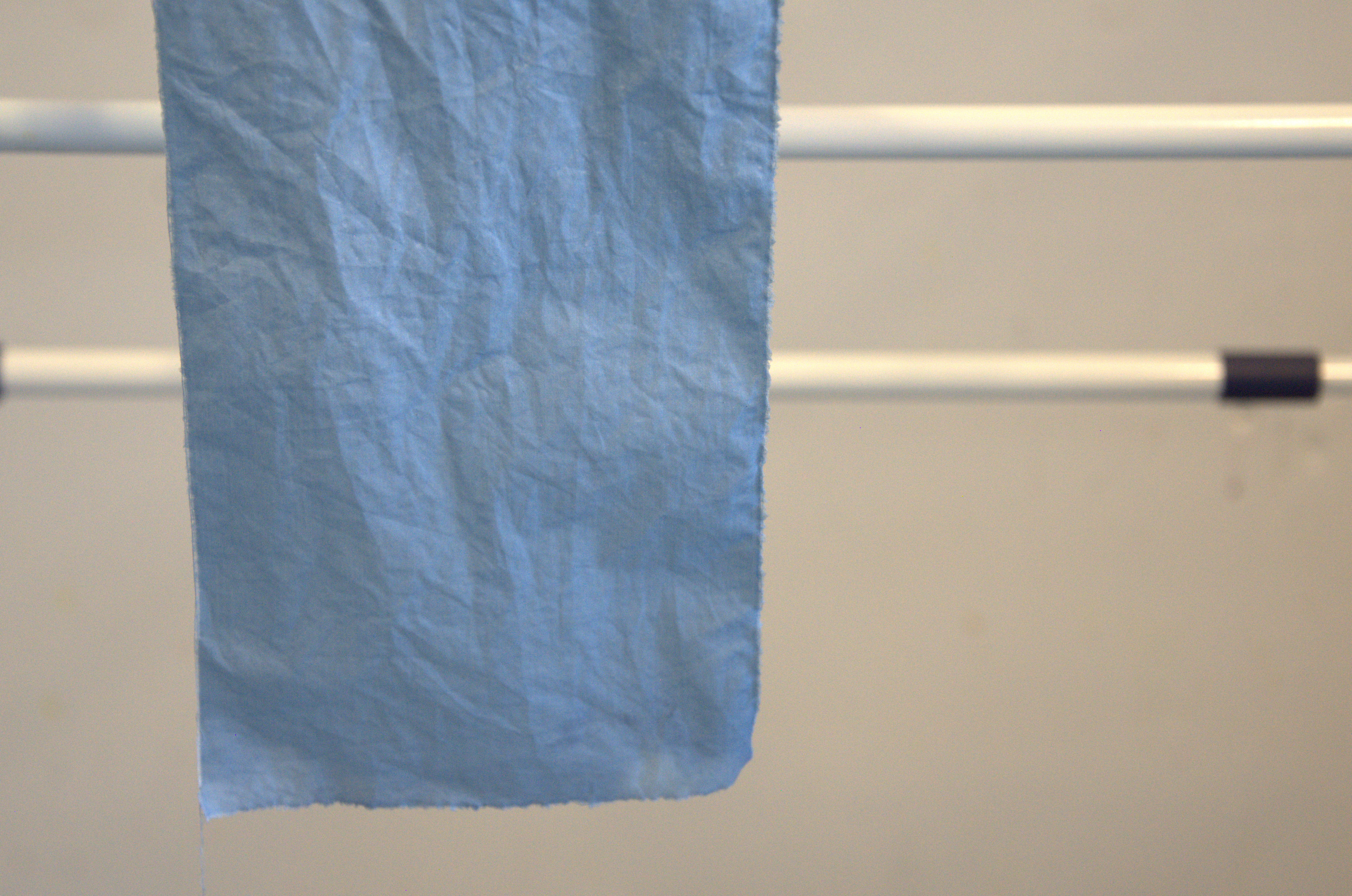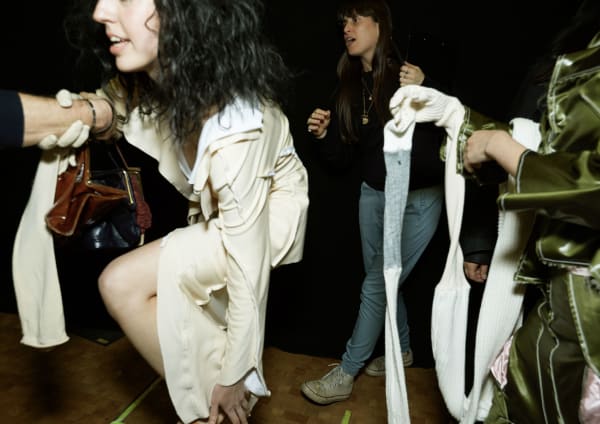The Fashion and Textiles workshops at Central Saint Martins house a growing library of plant-based dye and print options, with a natural Indigo dye that is not only non-toxic, it’s safe enough to drink.

Since coming to Central Saint Martins over three years ago, Specialist Print and Dye Technician Florence Hawkins has been developing sustainable and organic dye and print colour systems at CSM for students across Fashion and Textiles.
Reducing our reliance on chemical-based synthetics, an increasing number of students using the Print and Dye workshops now work with natural dyes.
Florence stocks a larder of plant and natural matter including roots, barks, flowers and extracts and is interested in expanding the range of colours in her library of natural dye samples. Madder Roots and Weld are grown on the roof of the College – plants that have been used in traditional dyeing processes over millennia. In the wallchart of swatches, we can see a range of natural dyes colours further transformed by using different pH applied to four fabrics: wool, linen, cotton and silk.
Students and staff have recently been dyeing ribbons using plants and biowaste and knotting naturally dyed fabric pieces for hanging in the workshop, promoting the colour possibilities of these plant and botanical dyes.

Brewing natural Indigo
Florence and colleagues, Associate Lecturers Rebecca Hoyes and Jackie Andrews set out to introduce traditional Indigo dyeing techniques last year, supported by the Central Saint Martins Creativity in Action Fund.
“It corresponded with what we wanted to do here, which was to have something really safe.” Jackie Andrews, Associate Lecturer, Fashion
“Also it comes from student demand, increasingly they are asking for sustainable approaches to material and colour.” Rebecca Hoyes, Associate Lecturer, BA Textile Design and Founder, Colour Matter
Training with an Indigo master, they built a vat in the workshop to ferment Indigo to an ancient recipe and keep it at a controlled temperature using an aquarium heater. Six months later with daily care and the right conditions, the live Indigo is in regular use. Depending on the number of dips and fabric type, it can produce colour from pale blue to deepest navy, without the toxic effects or corrosive properties of the hydros vat used to chemically dye Indigo.
Every morning Florence checks the vat, measuring the temperature, which needs to be between 28 and 34 degrees, and the pH which should be an alkaline reading of between 11.60 and 12. If it’s too low it won’t dye and this gives an indication that she needs to feed the vat with lime and/or date syrup. Once added, the vat needs to be stirred for 5 minutes, a vortex is formed to produce a flower, then it needs to rest to get the fermentation going.
Florence explains why Indigo matters so much in building out a library of natural dye results:

SONWERÊLD: Gracey Owusu-Agyemang, MA Fashion
With an all-natural final collection, SONWERÊLD, MA Fashion student Gracey Owusu-Agyemang was awarded the Canada Goose HumanNature Award for responsible design at the 2024 Central Saint Martins MA Fashion Show, part of London Fashion Week.
Producing six looks informed by Afrofuturism and materialised through the lens of agriculture, Gracey has been learning a lot with Florence in the workshops. She was the first student to test out the Indigo vat dye on a garment - and it was the process she used for her second runway look, shown below.

Annie Fisher, BA Textile Design (Weave)
BA (Hons) Textile Design student Annie is in her final year. She is also creating her final collection using entirely non-synthetic options and has been spending time with Florence and the team in the Print and Dye workshops.
-
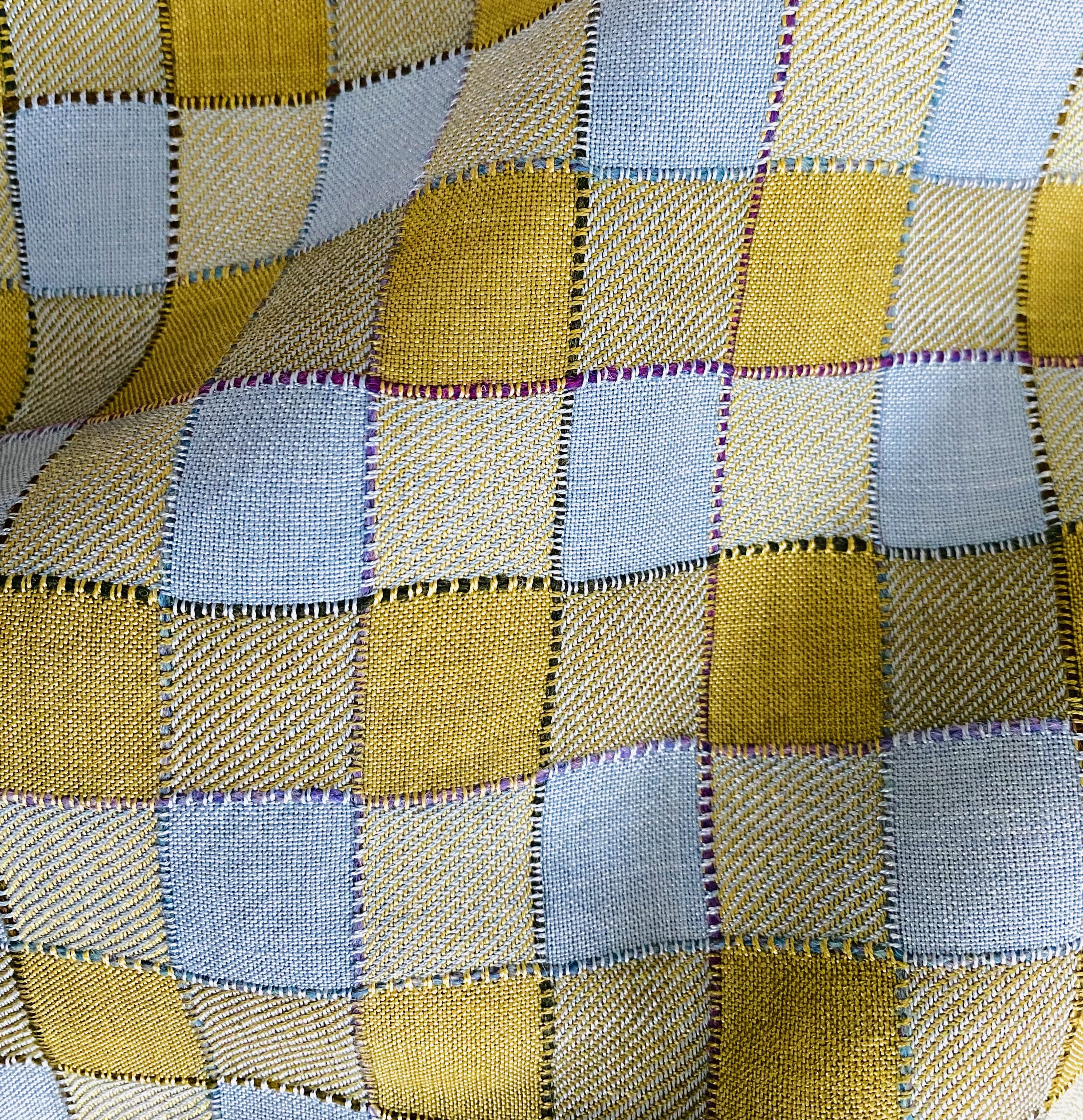
Annie Fisher, BA Textile Design
-
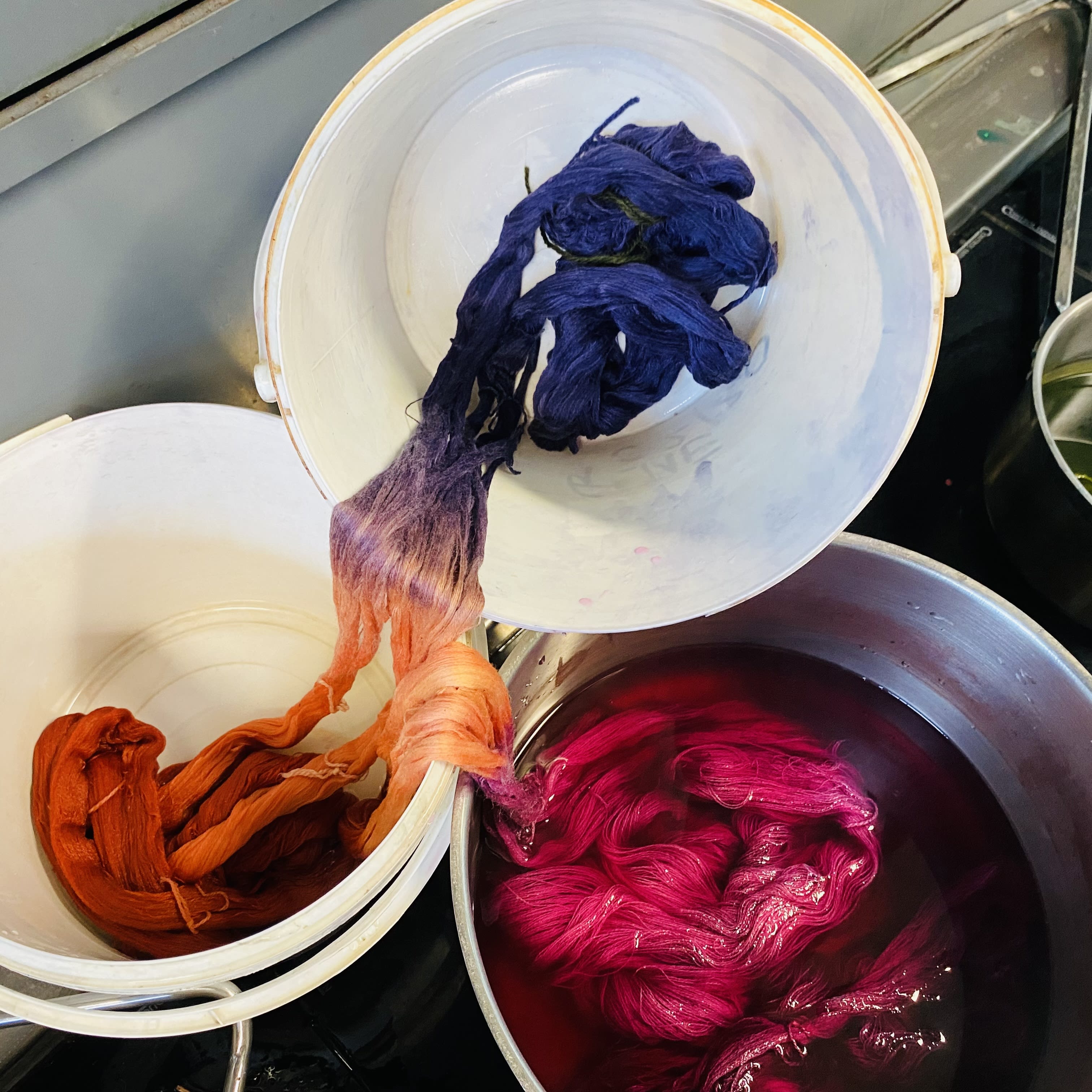
Results of working with plant dyes, Annie Fisher, BA Textile Design
-
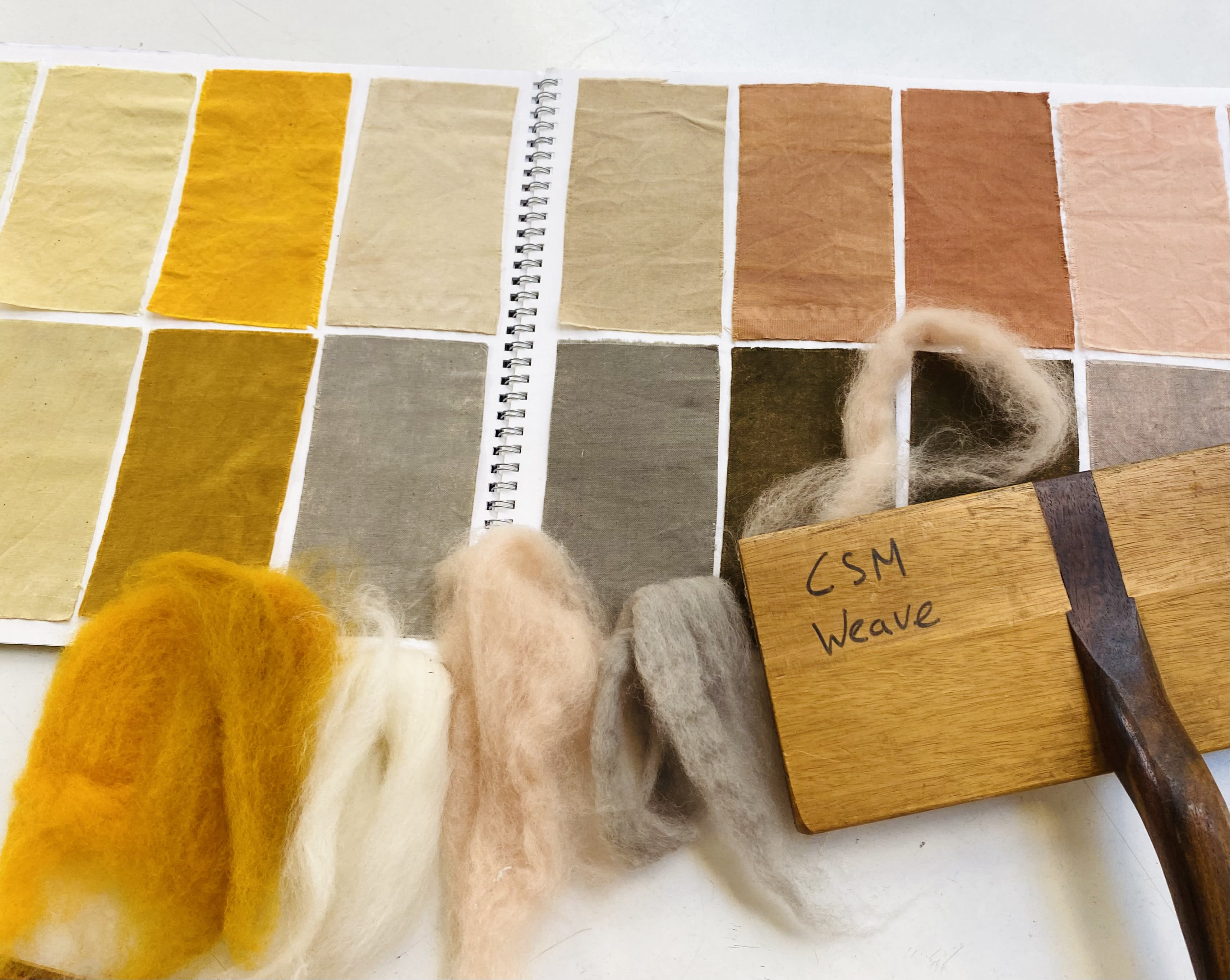
Samples, Annie Fisher, BA Textile Design
-
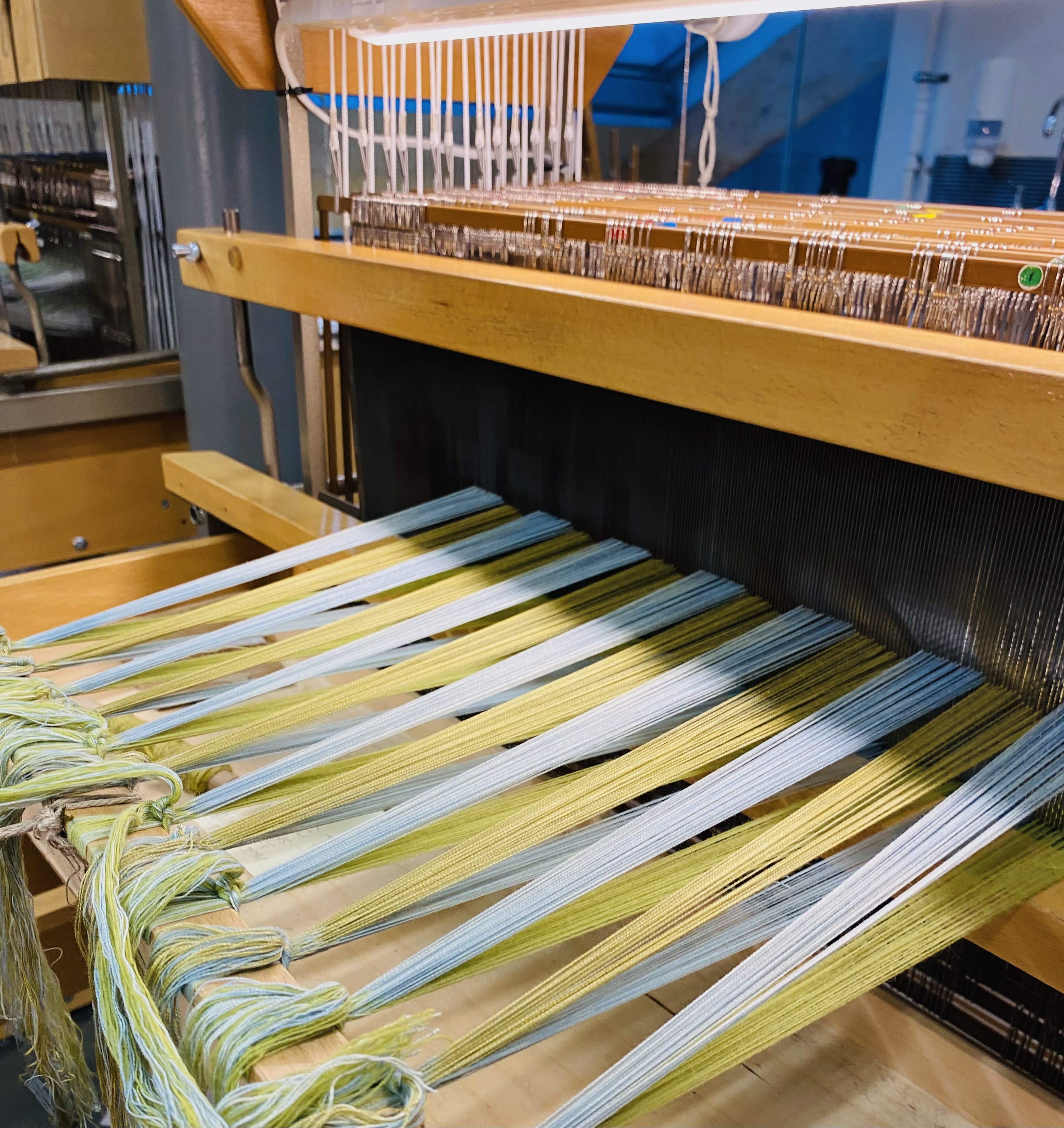
-
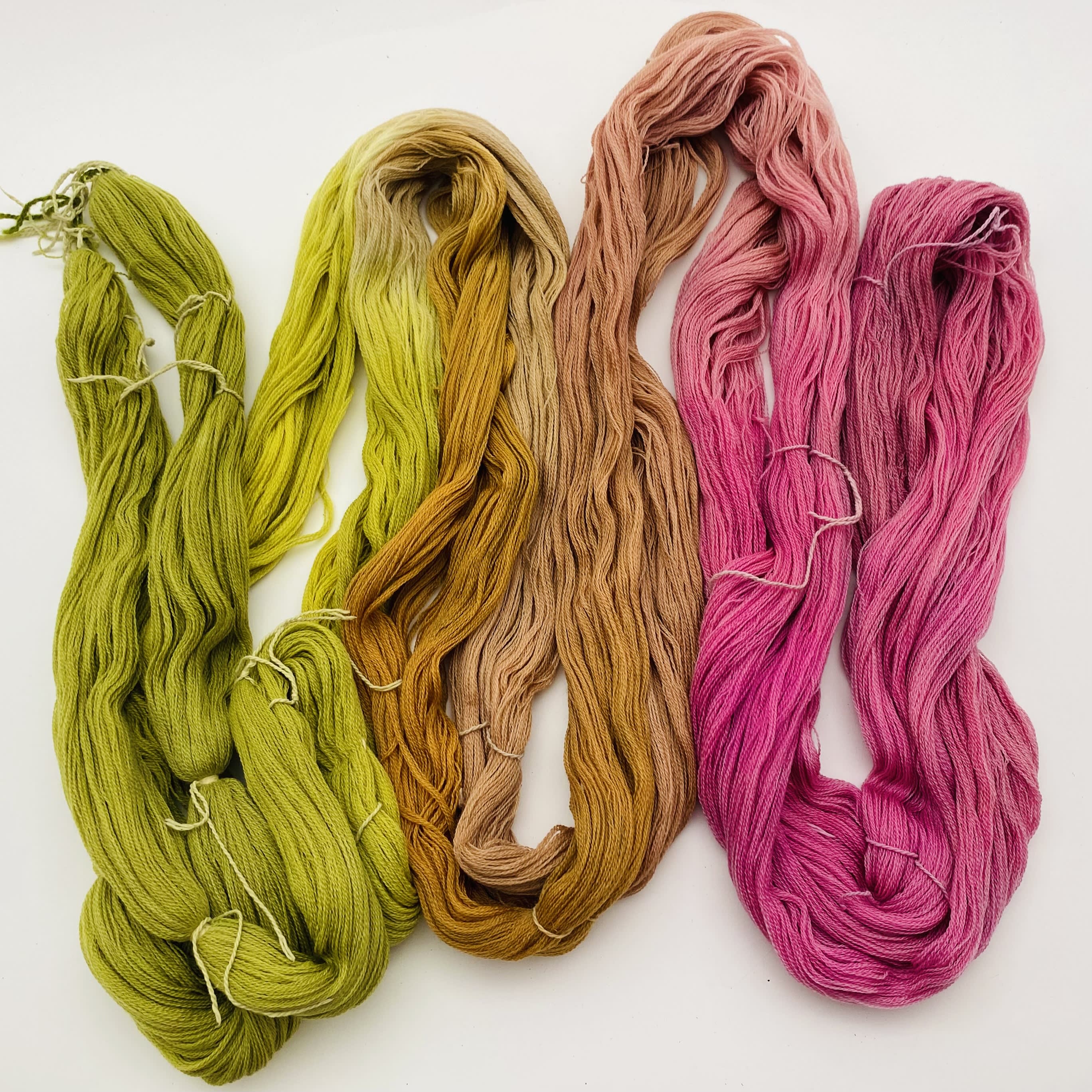
Naturally dyed fabrics, Annie Fisher, BA Textile Design

More
-
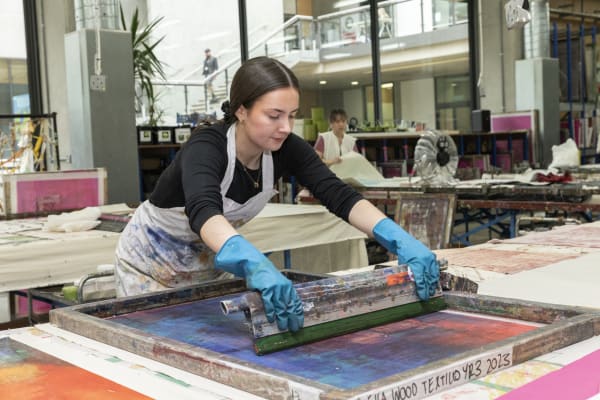
© Alys Tomlinson
-
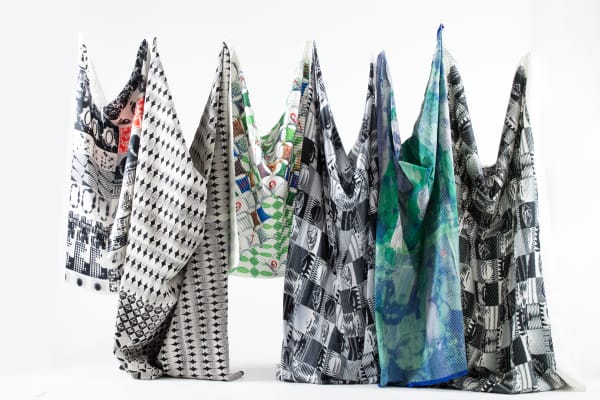
Yuqi Wu, BA Textile Design (Print)
